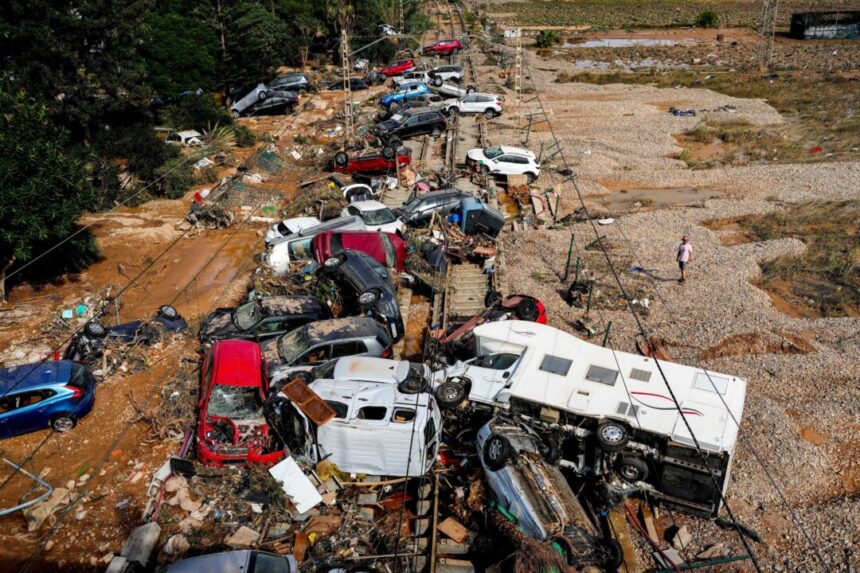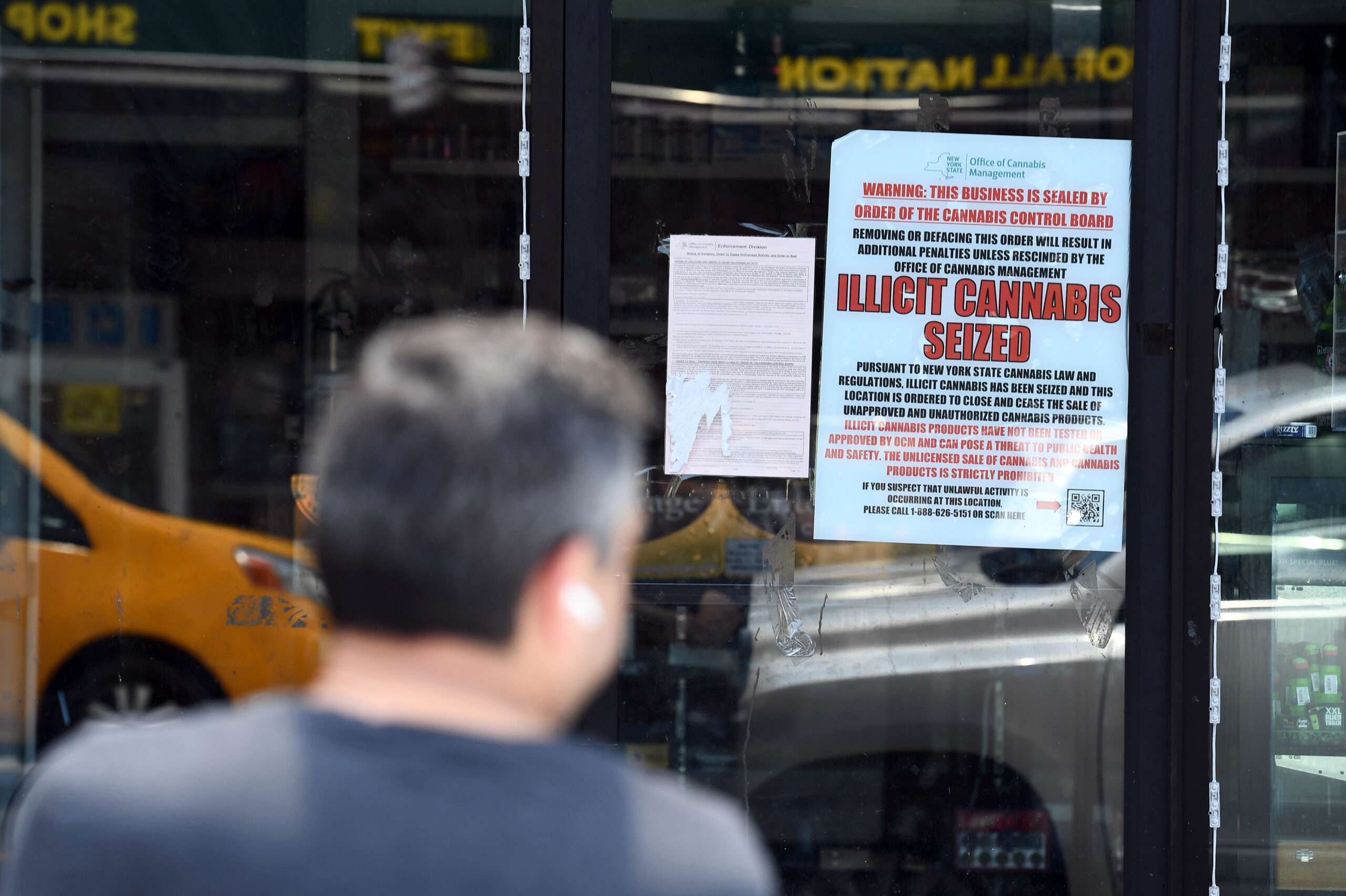BARRIO DE LA TORRE, Spain—In the aftermath of the most devastating natural disaster to hit Spain in this century, survivors woke up to a landscape of destruction on Thursday. Monstrous flash floods wiped out villages, claiming the lives of at least 95 people.
The death toll is expected to climb as search efforts continue, with officials recovering bodies from buildings and vehicles, and many individuals still missing.
“Unfortunately, there are casualties inside some vehicles,” said Spain’s Transport Minister Óscar Puente, referring to the hundreds of cars and trucks stranded on mud-stained roads.
The scenes resembled the aftermath of a powerful hurricane or tsunami.
In Barrio de la Torre, a suburb of Valencia, streets were littered with cars piled on top of each other, uprooted trees, downed power lines, and household items buried in mud. This was just one of many areas in the Valencia region that was severely impacted, with 92 people losing their lives between late Tuesday and Wednesday morning.
The torrents of water turned narrow streets into death traps, creating rivers that engulfed homes’ ground floors, swept away cars, people, and anything else in their path. Bridges collapsed, and roads were unrecognizable.
Christian Viena, the owner of a bar in Barrio de la Torre, described the neighborhood as “destroyed,” with cars smashed together in piles.
While regional authorities indicated that no one appeared to be stranded on rooftops or in cars needing rescue after helicopters saved around 70 individuals, ground teams and citizens continued to search damaged vehicles and homes.
“Our priority is to locate the victims and the missing persons to help alleviate the suffering of their families,” stated Spanish Prime Minister Pedro Sánchez after meeting with regional officials and emergency services in Valencia on Thursday, the first day of a three-day official mourning period in Spain.
Although Spain’s Mediterranean coast is accustomed to autumn storms that can lead to flooding, this flash flood event was the most severe in recent memory.
The devastation was not limited to municipalities near Valencia, as the storms wreaked havoc across large portions of the south and east coast of the Iberian Peninsula. Two fatalities were reported in the neighboring Castilla La Mancha region, and one death occurred in southern Andalusia.
Farther southwest in Andalusia, homes were left without water, and a high-speed train derailed, though no passengers were injured.
Greenhouses and farms in southern Spain, known as Europe’s garden for its agricultural exports, suffered extensive damage from heavy rains and flooding. The storms also produced a rare tornado in Valencia and a hailstorm that caused damage to cars in Andalusia.
On Thursday, heavy rains persisted further north, prompting the Spanish weather agency to issue red alerts for several counties in Castellón, an orange alert for Tarragona in northeast Catalonia, and the west coast of Cádiz in the southwest.
“This storm front is still active,” warned Sánchez. “Stay indoors and follow official guidance to help save lives.”
The Search Continues Amidst the Devastation
Over a thousand soldiers from Spain’s emergency rescue units joined regional and local emergency responders in the search for bodies and survivors. By Wednesday night, the soldiers had recovered 22 bodies and rescued 110 individuals.
“We are conducting a thorough search, going house by house,” said Ángel Martínez, a member of a military emergency unit, speaking from the town of Utiel, where at least six people lost their lives.
On Wednesday, approximately 150,000 people in Valencia were without electricity, but half had their power restored by Thursday. However, an unknown number of residents still lacked running water, leading many to purchase bottled water.
Stranded cars obstructed roads as people walked past, and the region remained partially cut off with several roads blocked and train services disrupted, including the high-speed route to Madrid, which officials estimated would take several days to repair.
One man shed tears on national broadcaster RTVE as he surveyed the remains of his home’s ground floor in Catarroja, a town south of Valencia. The scene resembled the aftermath of an explosion, with furniture and personal belongings destroyed, paint stripped off walls, and mud coating everything.
Officials Under Scrutiny for Delayed Flood Warnings
The intensity of the weather event caught regional government officials off guard. Spain’s national weather service reported that more rain fell in eight hours in the Valencian town of Chiva than in the previous 20 months, describing the deluge as “extraordinary.”
Despite the calm following the storm, questions arose about whether authorities could have taken more preemptive measures to minimize the destruction.
The Valencian regional government is facing criticism for its delayed flood warnings, which were not sent out to people’s mobile phones until 8 p.m. on Tuesday. This was well after the flooding had already begun in some areas and after the national weather agency had issued a red alert for heavy rains.
Andreu Salom, the mayor of the Valencian village of L’Alcudia, reported that the town had tragically lost at least two residents – a mother and daughter – due to the flooding. He also mentioned that a truck driver was still missing. Salom expressed frustration at the lack of warning about the disaster, which occurred as the Magro River overflowed its banks in the evening.
Mari Carmen Pérez, a resident of Barrio de la Torre, recounted receiving the flood warning on her phone after water had already entered her home, forcing her family to seek safety upstairs. She described the devastation caused by the rushing water and expressed disbelief at the lack of prior information.
Valencia regional President Carlos Mazón defended his administration’s response to the crisis, stating that all supervisors had followed the standard protocol. However, the delayed warnings and subsequent damage have left many residents feeling unprepared and vulnerable to the impact of the flooding.
Source link






